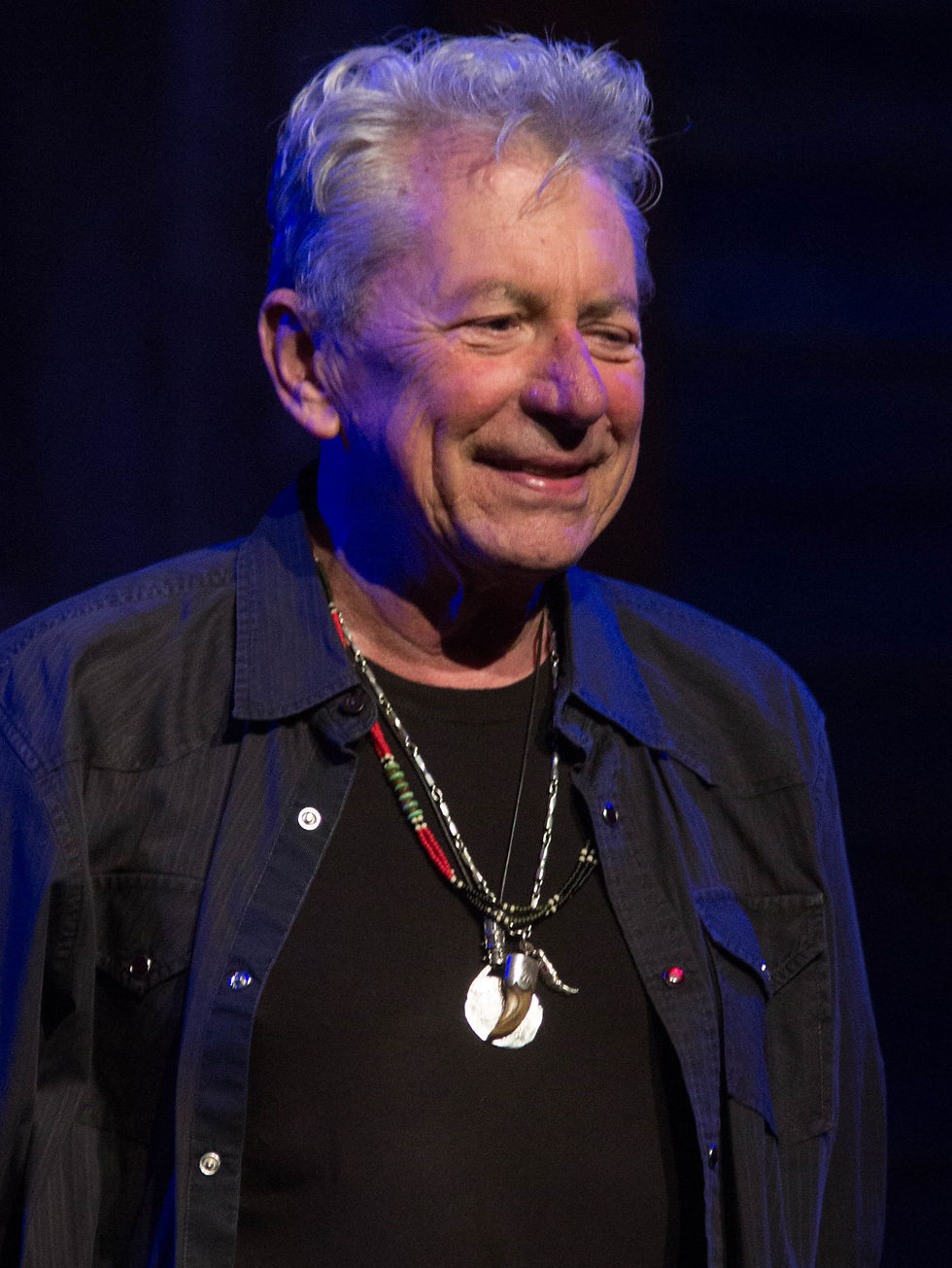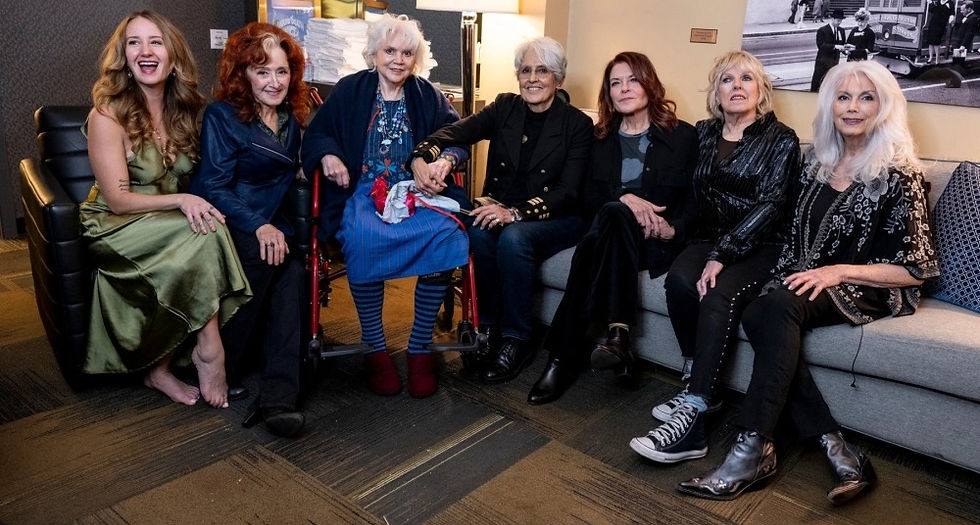A Half Century of Magical Acoustic Music
- cutlercomms
- Oct 12, 2023
- 5 min read

It is a half century since a bunch of good ole boys joined an original Deadhead and his offsider to deliver what many believe is the greatest live acoustic music ever recorded. The band – one of the first to be defined as a supergroup – called themselves Old & In the Way and they were turn bluegrass music on its head.
Old & In the Way was formed in 1973 when three bluegrass virtuosos, Peter Rowan, Vassar Clements and David Grisman decided to team up with a cult name in popular music, Jerry Garcia of the Grateful Dead, and John Kahn, Jerry’s bass-playing sidekick outside the Dead.
Their time together would be relatively short – just over a year – and during that time they would play around 50 live performances. The only recording occurred when they played two shows on October 1 & 8, 1973, at a low-key venue called the Boarding House in San Francisco.
The actual recording was by the Grateful Dead sound engineer Owsley (aka “Bear”) Stanley, with Vickie Babcock, on a stereo Nagra tape, using eight high-quality microphones. The tapes ended up holding one of the most valuable recordings of what became known as “progressive bluegrass” music.
The first album of material from the Boarding House was self-titled Old & In the Way and contained 10 diverse tracks. It was released in February 1975 and became one of the best-selling bluegrass albums of all time.
There was indeed more to come. The story goes that shortly before he died in 1995, Garcia asked Grisman to go through all Old & In the Way’s master tapes for potential new releases. And that is was led to further live albums from Stanley’s tapes– That High Lonesome Sound (1996) and Breakdown (1997).
And in November 2008, what was billed as a complete recording of the October 8 concert, Live at the Boarding House, was released. It was a double album containing 25 tracks. Then on October 1, 2013, to mark the 40th anniversary of the concerts, a four CD album, titled Live at the Boarding House: The Complete shows, was made available. The album contained the entire concerts of both Boarding House shows, with 55 tracks, 14 of which were previously unreleased.
The significance of the recordings was twofold. There was unanimous praise for the warm quality of the wonderful instrumental sound and accompanying harmonies. But perhaps of greater significance was how the enormous success of the live albums had generated a wider fan base for bluegrass.
Writing in Relix, Jesse Jarnow summed it perfectly: “While it was Peter Rowan’s sweet silvery holler and the quintet’s close dynamics that sold the Stinson Beach supergroup to audiences, it was Jerry Garcia’s presence that sold the band’s live LP to hippies, and in turn linked banjos to beardos forevermore”
Indeed! For by 1973, Garcia was already a cult figure in popular music. As co-founder, vocalist and lead guitarist of the San Francisco-based Grateful Dead, he was adored by the band’s fans known famously as “Deadheads.” But he was much more than just a figurehead in one of popular music’s most eclectic groups, he was somewhat of an obsessive musician, always exploring boundaries beyond one particular genre.
He would often cite a broad range of artists – among them Duke Ellington, Django Reinhardt and Miles Davis – as key influences, particularly on his long and inventive musical improvisations. Garcia would produce far more recordings, mostly live, with his own acoustic ensemble, The Jerry Garcia Band, and other side projects, than he would with the Grateful Dead.
When he formed Old & In the Way, he swapped his lead guitar for his banjo – he had indeed made a reputation as a sublime “Scruggs-style” banjo player. He also brought close-friend Kahn to the bluegrass outfit. Kahn had a reputation as a talented jazz bass player and would become Jerry’s principal musical collaborator outside the Dead.
The three other members of the quintet had more traditional roots, though each
had musical tentacles which extended far beyond bluegrass. Singer-songwriting guitarist Rowan and fiddle virtuoso Clements were old-school bluegrass, having once been members of Bill Monroe’s Blue Grass Boys, where the genre all began. Mandolinist Grisman was part of the emerging newgrass revival, playing an assortment of bluegrass, folk and jazz he called “Dawg music.”
Rowan had teamed up with Grisman in 1967, forming the psychedelic rock band Earth Opera which opened for The Doors. And when Grisman moved to San Francisco he met Garcia and would play mandolin on the Grateful Dead’s 1970 release American Beauty, an album dominated by Garcia compositions.
In fact, Grisman would prove the pivotal figure in the ever-lasting success of Old & In the Way. He was listed as the producer, editor and mixer on the original self-titled album released by Round Records, a label affiliated to Grateful Dead Records. And the subsequent four albums of The Boarding House shows – released between 1996 and 2013 – were all on Grisman’s own independent record label Acoustic Disc/Oasis, which he founded in 1990.
The original selection of 10 tracks – from the 55 eventually included in The Complete Shows – provides a good insight into how these musical purists intended to represent, and indeed promote, themselves. The best assessment is that it represents a fair mix of the old and the new, the borrowed and the blue. In other words, something for everyone under the progressive bluegrass banner!
The most interesting selection is a song by Jagger & Richards, that famous pair of composers hardly big in bluegrass circles. “Wild Horses” was on Sticky Fingers, the Rolling Stones album released in 1971 – one year after Gram Parsons made the original recording with The Flying Burrito Brothers. The Burritos gave it a distinctive alt country feel and this has been elevated to the full high lonesome sound by Old & In the Way, helped by some classic fiddling from Clements. It proved to a forerunner to countless versions by Americana artists over the years.
There are four Rowan compositions on the original album, but oddly, not the one considered by many to be his finest song. “Lonesome L.A. Cowboy,” only emerges on the second album, more than 20 years later. The song - Rowan’s whimsical take on drug-fuelled Californian musicians of the 1970’s – is a sheer delight: I been smokin' dope, snortin' coke/ Tryin' to write a song/Forgettin' everything I know/‘Til the next line comes along
For sheer acoustic purity, both instrumentally and vocally, it is hard to go past how the quintet treat the traditional songs.
The gospel standard “Angel Band” is near perfection, with the harmonies by Rowan, Garcia and Grisman eclipsing any other interpretations, including the impressive version by Emmylou Harris on her 1987 gospel album by the same name. The song is the final track to High Lonesome Sound. Another gospel classic “Drifting Too Far From The Shore” does not get included until Breakdown, but again it serves as the definitive bluegrass version.
As might be expected, many of Bill Monroe’s standards are on the setlist. But there is no Monroe song on the original album. The first, and probably Bill’s best, “I’m On My Way Back To The Old Home,” gets an outing on the second release and again it is the fiddle of Clements which gives it wonderful fusion and pace. Monroe’s “Wicked Path of Sin” is also on the 1996 release, with Rowan’s vocals as silky as could be.
Of the quintet, only Rowan and Grisman have survived. But the group’s legacy is musical gold-dust. And the 50th anniversary of this famous recording is a good opportunity to revisit, or even discover, the Boarding House shows.
Paul Cutler
Editor Crossroads – Americana Music Appreciation





Comments